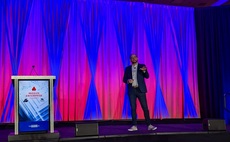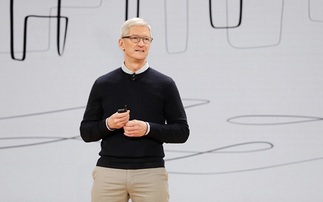
Most areas of financial services have been quick to adapt to the consumerisation of IT - but not motor insurance
The consumerisation of IT has completely changed almost every element of financial services, bar one: motor insurance. But why - and, more importantly, what kind of service are drivers likely to see when this sector finally follows in the footsteps of the rest of the financial fraternity?
You could be forgiven for thinking that Atom, Marcus and Molo are the children of a rockstar. You probably wouldn't be too far wrong but they are, in fact, just a few of the companies disrupting the financial ecosystem by a phenomenon known as the consumerisation of IT.
In essence, this covers the use of technology in an everyday, consumer-oriented context. Ease of use, added value, and the simplicity of an exchange of content ensure that this technology is inextricably connected to our personal lives. Experience gained at home with new technology is introduced into the work environment in a simple way and stimulates innovation. It is something the financial sector has been quick to adopt, with the notable exception of motor insurance.
Skin in the consumerisation game
To articulate just how far finance has been consumerised, we only need look at the numbers - no loss of irony, here. With bank branches closed during the pandemic, consumers had no option but to use their bank's digital channels. As a result, 50 per cent of consumers now interact with their bank through mobile apps or websites at least once a week, compared to 32 percent two years ago. For example, Starling Bank was the second most switched-to bank in the final quarter of 2020.
The MoEngage State of Mobile Finance 2021 says there were over 4.3 billion downloads of finance apps between September 2019 and August 2020, which paints a decent picture in terms of the growth of adoption. According to Google, a smartphone user has on average close to three personal finance apps installed on their mobile devices, with four in 10 using their devices for managing finance, checking account history, tracking investments and paying bills among other financial activities.
This increase in adoption observed across the board has resulted in sub-segments like payments, lending, investment and wealth management also getting some ‘skin in the game' of consumerisation. As a result, we are seeing a great many changes taking place as the almost ubiquitous use of technology takes effect.
A time to be alive
It wouldn't be overstating the fact to say this movement has revolutionised industries. Years down the line from its inception there are some clear learnings and benefits to be taken for industries still behind the times.
Applications today need to be so intuitive that what to do next should be apparent without reading a guide or needing to phone for help. Indeed, these applications should be mobile-enabled and available anytime, anywhere. Because the consumerisation of IT has led to an explosion of data, communications and offers should be personalised - Netflix and Spotify are the benchmark for consumers. Similarly, consumers today value personalisation and speed. Google conditioned the world to find anything digital in milliseconds and Amazon manifested that approach in a real-world context. Finally, they need to be alive. They need to bend and flex with the customer's evolving habits and usage - particularly driving. This is being shaped by major macro issues like sustainability, electric vehicles and legislation (like London's ULEZ). This is where insurance has been reluctant to change and why it remains so far behind other areas of financial services.
The scale of consumerisation means that regulation has also had to evolve to keep pace. The advent of open banking regulations, like the Payment Services Directive (PSD2) in Europe, makes innovation and change a necessity. After all, PSD2 stipulates that if customers authorise it, organisations must make relevant details of their account available to third parties through an open API. This is predicated on tools and IT systems designed to be able to access - and act on - this data quickly.
Advancing years, in weeks
The benefits are clear and to keep pace with change, competition and customers motor insurance has to grab the bull by the horns, now. This means investment into key technology areas to make consumerisation possible, but there are some quick and simple wins to get the ball rolling fast.
Adopting elements like open banking and chatbots should be the base-line, as should a move to offering usage-based insurance (UBI), which immediately offers the consumer the personaliation they're getting from other brands. It also means drivers know they are not, in their view, being overcharged - an issue that has beset the insurance industry for far too long. Consumers demand self-service channels (social and mobile enhanced) that are convenient and easily accessible, but it is clear that insurers have an opportunity to attract and retain customers if they are able to offer an omni-channel experience — a platform of consistency in services across multiple channels.
Because the path to consumerisation is so well trodden, adopting these services does not require insurers to reinvent the wheel or rip out their tech stack. There are digital native companies that can bring an insurer from the 20th to the 21st century in weeks.
Rock 'n roll world of insurance
Expectations are rising at an accelerated pace, and the choices available are forcing old products to be modernised while competing against new and innovative digitally transformed programmes of insurance. Today, an insurer's relationship with its customers is characterised by a new level of immediacy, and this is forcing businesses to think about how they can add value to interactions. The challenge insurers face is rethinking habitual ways of interacting with customers and recasting their organisations' capabilities and efforts in the face of accelerating change.
Imagine having a relationship with a customer where they opened and interacted with your app every week, or perhaps every journey? Imagine the data, analysis and subsequent benefits that could be realised. For insurance, that really would be rock 'n roll.
Callum Rimmer is founder & CEO of ByBits




















